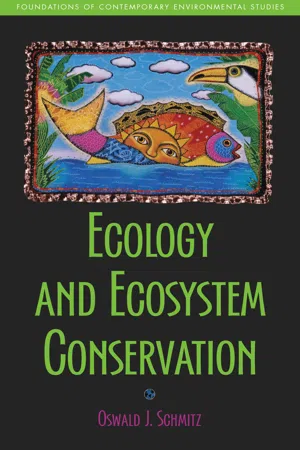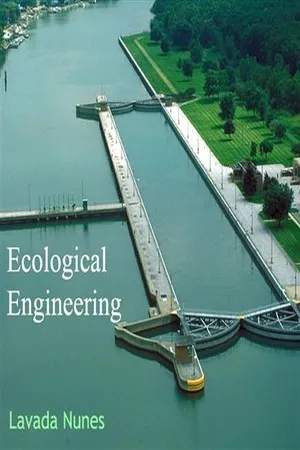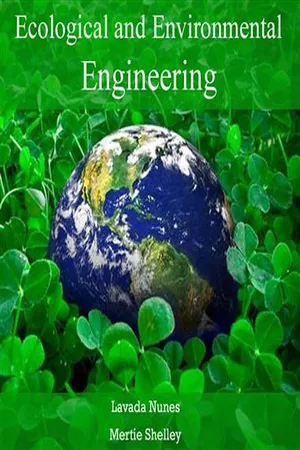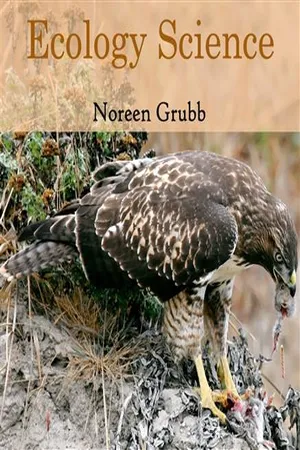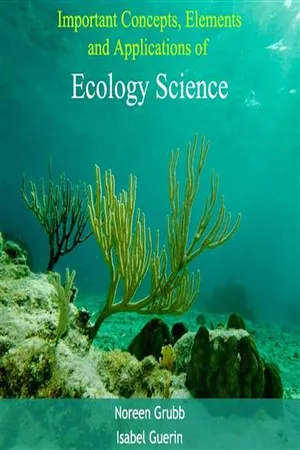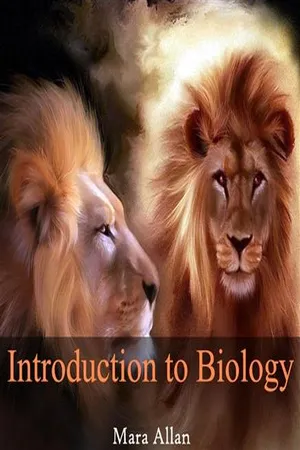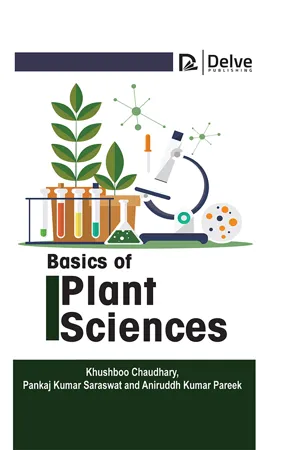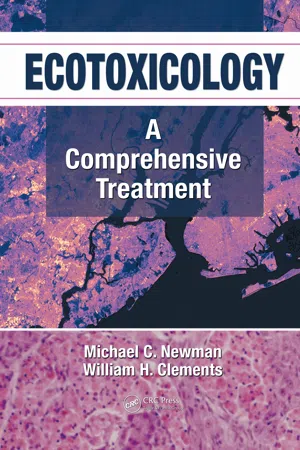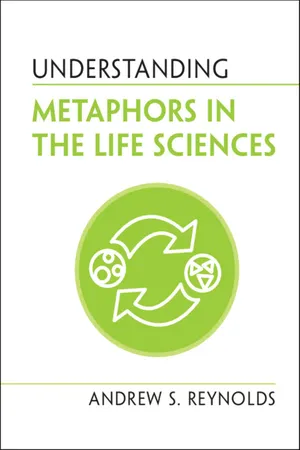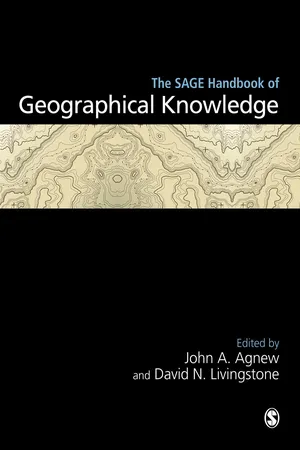Biological Sciences
Ecology
Ecology is the scientific study of the relationships between living organisms and their environment. It encompasses the interactions between organisms, their physical surroundings, and other living organisms. Ecologists examine the distribution and abundance of organisms, as well as the processes that influence these patterns, to better understand the functioning of ecosystems.
Written by Perlego with AI-assistance
Related key terms
1 of 5
11 Key excerpts on "Ecology"
- eBook - PDF
Ecology
From Ecosystem to Biosphere
- Christian Leveque(Author)
- 2003(Publication Date)
- CRC Press(Publisher)
Others dispute this filiation. From the end of the 19th century, the term Ecology was used, notably by the Danish botanist E. Warming, to designate the part of botanical geography that studies the relationships of plants with their environment. From the 1930s onward, it was commonly used by scientists in England and the United States and began to be known in France. It appeared in French dictionaries only in 1956, defined as the part of biology that studies the relationships of living things with the natural environment. Definition of the term Ecology By Ecology we mean the science of the set of relationships that organisms have with each other and with the external world (Haeckel, 1866). Ecology is considered the science of relationships between living things and their environment. Since living things are closely integrated with their environment, Ecology is the science of complex, functional biological systems called ecosystems. It also encompasses the study of relationships between living things (Duvigneaud, 1974). Defined as the study of relationships of organisms with their environment,. or as the study of interactions that determine the distribution and abundance of organisms (Krebs, 1972), or even as the study of ecosystems, Ecology opens on to a wide field, ranging from physiology to biogeography. Seen from this angle, it is a sort of general biology of organisms, a naturalistic approach to the living world (Barbault, 1983). “Ecological theory today spans a large range of topics, from the physiology and behavior of individuals or groups of organisms, through population dynamics and community Ecology, to the Ecology of ecosystems and the biochemical cycles of the entire biosphere. Ecology theory also embraces large parts of evolutionary biology, including paleontology and systematics, and of the earth sciences, especially oceanography and tectonics” (Roughgardenetal., 1989). - eBook - ePub
- Oswald J. Schmitz(Author)
- 2013(Publication Date)
- Island Press(Publisher)
This simple container system is a powerful metaphor for the way species assemble and interact in nature.The processes of production and consumption are fundamental to sustaining the functioning of all ecological systems globally. Natural ecological systems differ from the container system in that they are comprised of vastly more species with many more interdependencies than those found in the glass container. Understanding these complex interdependencies is the fundamental purpose of that subfield of biology known as Ecology.What Is Ecology?
Ecology is a science aimed at understanding:- The processes by which living organisms interact with each other and with the physical and chemical components of their surrounding environment.
- The way those processes lead to patterns in the geographical distribution and abundance of different kinds of organisms.
Ecosystems encapsulate many forms of biological diversity (also called biodiversity). Biodiversity results from a variety among individuals comprising a species owing to sex, age, and genetic differences among those individuals. It also stems from differences between species living together in a geographic location. For example, species may differ in their functional roles (e.g., plant, herbivore, carnivore) and the efficiency with which each carries out its function in different environmental conditions. Biodiversity also arises from the myriad ways that species are linked to each other in ecosystems. As a consequence of these many forms of biodiversity, there is considerable complexity underlying the structure of ecosystems.The challenge in Ecology is resolving this complexity.Biodiversity results from a variety among individuals comprising a species due to sex, age, and ge- netic differences; from differences between species living together in a geographic location; and from the myriad ways that species are linked to each other in ecosystems. As a consequence of these many forms of biodiversity, there is consider- able complexity underlying the structure of ecosystems. The chal- lenge in Ecology is resolving this complexity. - No longer available |Learn more
- (Author)
- 2014(Publication Date)
- Research World(Publisher)
____________________ WORLD TECHNOLOGIES ____________________ Chapter 5 Ecology ____________________ WORLD TECHNOLOGIES ____________________ ____________________ WORLD TECHNOLOGIES ____________________ ____________________ WORLD TECHNOLOGIES ____________________ ____________________ WORLD TECHNOLOGIES ____________________ The scientific discipline of Ecology encompasses areas from global processes (above), to the study of marine and terrestrial habitats (middle) to interspecific interactions such as predation and pollination (below). Ecology (from Greek: ο ἶ κος , house; -λογία, study of) is the scientific study of the rel -ation of living organisms with each other and their surroundings. Ecosystems are defined by a web, community, or network of individuals that arrange into a self-organized and complex hierarchy of pattern and process. Ecosystems create a biophysical feedback between living (biotic) and nonliving (abiotic) components of an environment that generates and regulates the biogeochemical cycles of the planet. Ecosystems provide goods and services that sustain human societies and general well-being. Ecosystems are sustained by biodiversity within them. Biodiversity is the full-scale of life and its processes, including genes, species and ecosystems forming lineages that integrate into a complex and regenerative spatial arrangement of types, forms, and interactions. Ecology is a sub-discipline of biology, the study of life. The word Ecology (oeko-logie) was coined in 1866 by the German scientist Ernst Haeckel (1834–1919). Haeckel was a zoologist, artist, writer, and later in life a professor of comparative anatomy. Ancient philosophers of Greece, including Hippocrates and Aristotle, were among the earliest to record notes and observations on the natural history of plants and animals; the early rudiments of modern Ecology. Modern Ecology mostly branched out of natural - No longer available |Learn more
- (Author)
- 2014(Publication Date)
- Academic Studio(Publisher)
____________________ WORLD TECHNOLOGIES ____________________ Chapter 6 Ecology ____________________ WORLD TECHNOLOGIES ____________________ ____________________ WORLD TECHNOLOGIES ____________________ ____________________ WORLD TECHNOLOGIES ____________________ ____________________ WORLD TECHNOLOGIES ____________________ The scientific discipline of Ecology encompasses areas from global processes (above), to the study of marine and terrestrial habitats (middle) to interspecific interactions such as predation and pollination (below). Ecology (from Greek: ο ἶ κος , house; -λογία, study of) is the scientific study of the relation of living organisms with each other and their surroundings. Ecosystems are defined by a web, community, or network of individuals that arrange into a self-organized and complex hierarchy of pattern and process. Ecosystems create a biophysical feedback between living (biotic) and nonliving (abiotic) components of an environment that generates and regulates the biogeochemical cycles of the planet. Ecosystems provide goods and services that sustain human societies and general well-being. Ecosystems are sustained by biodiversity within them. Biodiversity is the full-scale of life and its processes, including genes, species and ecosystems forming lineages that integrate into a complex and regenerative spatial arrangement of types, forms, and interactions. Ecology is a sub-discipline of biology, the study of life. The word Ecology (oe-kologie) was coined in 1866 by the German scientist Ernst Haeckel (1834–1919). Haeckel was a zoologist, artist, writer, and later in life a professor of comparative anatomy. Ancient philosophers of Greece, including Hippocrates and Aristotle, were among the earliest to record notes and observations on the natural history of plants and animals; the early rudiments of modern Ecology. Modern Ecology mostly branched out of - No longer available |Learn more
- (Author)
- 2014(Publication Date)
- Learning Press(Publisher)
________________________ WORLD TECHNOLOGIES ________________________ Chapter 1 Introduction to Ecology ________________________ WORLD TECHNOLOGIES ________________________ ________________________ WORLD TECHNOLOGIES ________________________ ________________________ WORLD TECHNOLOGIES ________________________ ________________________ WORLD TECHNOLOGIES ________________________ The scientific discipline of Ecology encompasses areas from global processes (above), to the study of marine and terrestrial habitats (middle) to interspecific interactions such as predation and pollination (below). Ecology is the scientific study of the relation of living organisms with each other and their surroundings. Ecosystems are defined by a web, community, or network of individuals that arrange into a self-organized and complex systems and several levels of bigger systems constituting systems of smaller systems within them. Ecosystems create biophysical feedback between living (biotic) and nonliving (abiotic) components of an environment that generates and regulates the biogeochemical cycles of the planet. Ecosystems provide goods and services that sustain human societies and general well-being. Ecosystems are sustained by biodiversity within them. Biodiversity is the full-scale of life and its processes, including genes, species and ecosystems forming lineages ________________________ WORLD TECHNOLOGIES ________________________ that integrate into a complex and regenerative spatial arrangement of types, forms, and interactions. Ecology is a sub-discipline of biology, the study of life. The word Ecology (Öko-logie) was coined in 1866 by the German scientist Ernst Haeckel (1834–1919). Ancient philosophers of Greece, including Hippocrates and Aristotle, were among the earliest to record notes and observations on the natural history of plants and animals. Modern Ecology later branched out of the natural history that flourished as a science in the late 19th century. - No longer available |Learn more
- (Author)
- 2014(Publication Date)
- College Publishing House(Publisher)
________________________ WORLD TECHNOLOGIES ________________________ Chapter 1 Introduction to Ecology ________________________ WORLD TECHNOLOGIES ________________________ ________________________ WORLD TECHNOLOGIES ________________________ ________________________ WORLD TECHNOLOGIES ________________________ ________________________ WORLD TECHNOLOGIES ________________________ The scientific discipline of Ecology encompasses areas from global processes (above), to the study of marine and terrestrial habitats (middle) to interspecific interactions such as predation and pollination (below). Ecology is the scientific study of the relation of living organisms with each other and their surroundings. Ecosystems are defined by a web, community, or network of individuals that arrange into a self-organized and complex systems and several levels of bigger systems constituting systems of smaller systems within them. Ecosystems create biophysical feedback between living (biotic) and nonliving (abiotic) components of an environment that generates and regulates the biogeochemical cycles of the planet. Ecosystems provide goods and services that sustain human societies and general well-being. Ecosystems are sustained by biodiversity within them. Biodiversity is the full-scale of life and its processes, including genes, species and ecosystems forming lineages ________________________ WORLD TECHNOLOGIES ________________________ that integrate into a complex and regenerative spatial arrangement of types, forms, and interactions. Ecology is a sub-discipline of biology, the study of life. The word Ecology (Ökologie) was coined in 1866 by the German scientist Ernst Haeckel (1834–1919). Ancient philosophers of Greece, including Hippocrates and Aristotle, were among the earliest to record notes and observations on the natural history of plants and animals. Modern Ecology later branched out of the natural history that flourished as a science in the late 19th century. - No longer available |Learn more
- (Author)
- 2014(Publication Date)
- Learning Press(Publisher)
________________________ WORLD TECHNOLOGIES ________________________ Chapter 6 Ecology ________________________ WORLD TECHNOLOGIES ________________________ ________________________ WORLD TECHNOLOGIES ________________________ ________________________ WORLD TECHNOLOGIES ________________________ The scientific discipline of Ecology encompasses areas from global processes (above), to the study of marine and terrestrial habitats (middle) to interspecific interactions such as predation and pollination (below). Ecology is the scientific study of the relation of living organisms with each other and their surroundings. Ecosystems are defined by a web, community, or network of indivi-duals that arrange into a self-organized and complex systems and several levels of bigger systems constituting systems of smaller systems within them. Ecosystems create biophysical feedback between living (biotic) and nonliving (abiotic) components of an environment that generates and regulates the biogeochemical cycles of the planet. Ecosystems provide goods and services that sustain human societies and general well-being. Ecosystems are sustained by biodiversity within them. Biodiversity is the full-scale of life and its processes, including genes, species and ecosystems forming lineages ________________________ WORLD TECHNOLOGIES ________________________ that integrate into a complex and regenerative spatial arrangement of types, forms, and interactions. Ecology is a sub-discipline of biology, the study of life. The word Ecology (Öko-logie) was coined in 1866 by the German scientist Ernst Haeckel (1834–1919). Ancient philosophers of Greece, including Hippocrates and Aristotle, were among the earliest to record notes and observations on the natural history of plants and animals. Modern Ecology later branched out of the natural history that flourished as a science in the late 19th century. - eBook - PDF
- Khushboo Chaudhary, Pankaj Kumar Saraswat, Aniruddh Kumar Pareek(Authors)
- 2023(Publication Date)
- Delve Publishing(Publisher)
PART IV: ENVIRONMENTAL SCIENCE AND AGROEcology Ecology - DEFINITION, DIVISION AND SIGNIFICANCE CHAPTER14 INTRODUCTION Ecology- The study of the relationships between different species in a given area is known as Ecology. Biosphere- Sphere of the Earth in which all living things exist. It is found from the atmosphere all the way into the lithosphere figure 14.1. Level of Organization Species- a group of organisms that can interbreed and produce fertile offspring Population- Groups of individuals of a certain species living in a certain area Community- Different populations that live in the same area. Ecosystem- Collection of both the community and the abiotic factors in a certain area Biome- Group of ecosystems that have the same climatic conditions We can’t do experiments on the whole, natural ecosystems. Instead, we use several tools to explore ecosystems: • Observations- We watch and take detailed notes about an ecosystem Basics of Plant Sciences 120 • Experimenting-Taking an artificial environment and using the scientific method on it. Modeling- Using computers to show what has happened and what will happen in an ecosystem. Biotic Factors Living Factors that influence an ecosystem, Plant life and animal life Abiotic Factors Physical, non-living factors that influence an ecosystem e.g. temperature, precipitation, humidity, wind, nutrients, sunlight. Figure 14.1: Ecosystem. The area where an organism lives is called its habitat. Habitats provide wildlife populations with food, water, shelter and space. A niche is the full range of physical and biological conditions in which an organism lives and the way in which the organism uses those conditions. It is an organism’s occupation. Energy and Matter Flow Both Energy and Matter flow through an ecosystem. Energy flows into and out of the ecosystem. The matter is usually recycled. - eBook - PDF
Ecotoxicology
A Comprehensive Treatment
- Michael C. Newman, William H. Clements(Authors)
- 2007(Publication Date)
- CRC Press(Publisher)
Though the organisms may claim our primary interest, when we are trying to think fundamentally we cannot separate them from their special environment, with which they form one physical system. (Tansley 1935) Thus, one distinguishing feature of ecosystem Ecology, which was recognized early in its history, was the necessity of considering integrated physical, chemical, and biological processes. Ecosystem ecologists are not simply recognizing the influences of the physical environment but are considering organisms and the abiotic environment as part of a single system. This holistic perspective is funda-mentally different than how lower levels of organization have been treated in Ecology. Likens (1992) defined an ecosystem as a “spatially explicit unit of the earth that includes all of the organisms along with all components of the abiotic environment within its boundaries.” One can see by this broad definition that while the spatial extent of an ecosystem remains somewhat vague, the emphasis is on including organisms and the environment. We will also see that because of the focus on movement of energy and abiotic materials (e.g., C, N, P), ecosystem Ecology integrates the fields of chemistry, physics, and biology and is, therefore, necessarily a multidisciplinary science. 613 614 Ecotoxicology: A Comprehensive Treatment 29.1.1 T HE S PATIAL B OUNDARIES OF E COSYSTEMS Because of the loosely defined spatial and temporal boundaries, some ecologists have argued that ecosystems lack the logical interconnectedness typical of other levels of biological organization (Reiners 1986). Clearly, the spatial boundaries of an ecosystem often extend beyond those of its component populations and communities. These broad spatial and temporal boundaries of ecosys-tems are necessary because they provide ecologists with the flexibility to match questions with appropriate scales. - eBook - PDF
- Andrew S. Reynolds(Author)
- 2022(Publication Date)
- Cambridge University Press(Publisher)
In modern ecological science these relations of biotic (living) and abiotic (non- living) interdependence are collected under the familiar term “ecosystem.” Questions about the degree to which ecosystems are stable or undergo con- stant change (and at what scale) have been a perennial source of debate. Darwin himself, although he championed the idea of evolutionary change in nature at large, also seemed to endorse the idea that an established system of relations among species of plants and animals reflects a “balance of nature.” Today, public debate over terminology such as “global warming” or “climate change” illustrates how these duelling visions of an environment in stasis or in constant change continue to influence our understanding of nature and life on the planet. Modern Ecology is a rich science with a diversity of metaphors to match, so some selectivity in this chapter is necessary. I have chosen to discuss several metaphors that have been or currently are influential and that touch on the issue of stability versus change. The term “Ecology” itself has metaphorical origins, drawing on the earlier metaphorical expression of the “economy of nature,” which referred to the contribution made by plant and animal species to the supposed stability of nature’s balance. Darwin’s metaphor of a species or variation “fitting” its environment was later developed by ecologists into the concept of an ecological “niche,” which in its original form suggested a position or role in the economy of nature pre-existing a species and just waiting to be filled by it or some other candidate organism. This was eventu- ally replaced with the idea that organisms do not simply find a niche waiting for them, but rather “construct” the niche by transforming the environment through their presence and behaviour. Organism and environment are then conceived as being in a dynamic process of mutual co-construction. - eBook - PDF
- John A Agnew, David N Livingstone, John A Agnew, David N Livingstone, SAGE Publications Ltd(Authors)
- 2011(Publication Date)
- SAGE Publications Ltd(Publisher)
Huggett (1980) in his more introductory text makes ecosystem more central, with many illustrations involving plants and animals. The area of geography most closely allied to Ecology is called biogeography. While this term too might seem straightforward, it too is contested in that what is actually studied and taught under this title, at least at graduate levels, in geography programs it is more like what is called Ecology than called biogeogra-phy in biology programs or their direct descendents (i.e. academic departments of Ecology and evolution). So we might expect that in geography biogeographers would be affected by the developments of ecosystem in much the same way as their colleagues in Ecology. Given that biogeography is largely seen as a subfield within physical geography [although it once was held as a third pole along with physical and human geography by Kuchler (1953)] and that rest of physical geography is about the inorganic or abiotic portion of the environment, it would be easy to imagine that systems Ecology would find allies and/or direct competitors among bio-geographers. Wrong! Biogeographers mostly have not engaged in systems Ecology. Calls for such participa-tion (e.g. Morgan and Moss 1965; Gersmehl 1976) have gone unheeded. Some of the work of Meentemeyer (1984, for example) on litter decomposition or Chadwick (Chadwick et al . 2003, for example) and Doyle and Stanley’s (2006) recent study of nutrient retention in a stream are among the very few biogeography studies that would meet the standards of systems Ecology (here I am not considering where geographers contribute via remote sensing or GIS). Where ecosystems Ecology has been linked to geog-raphy it has been in studies, especially models, of global climate change where the collaborations of geographers are in remote sensing or climatology, with systems ecolo-gists doing the Ecology.
Index pages curate the most relevant extracts from our library of academic textbooks. They’ve been created using an in-house natural language model (NLM), each adding context and meaning to key research topics.

